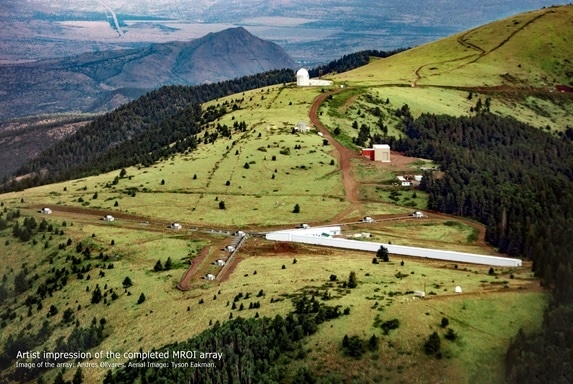Apr 23 2018
Optical Surfaces Ltd. has been selected by the Magdalena Ridge Observatory (Socorro, New Mexico, USA) to produce an ultra-stable 7.5x off-axis beam compressor that will form a key beam transfer element in the facility’s optical interferometer.

When completed the Magdalena Ridge Observatory Interferometer (MROI) will be one of the world’s most powerful optical-infrared interferometers, dedicated to high resolution imaging of all types of astronomical objects. The objects that will be observed with the MROI will include many types of nearby stars, including direct observations of the radial pulsations of Cepheid variable stars and surface features on giant stars, to imaging of the brightest active galactic nuclei. In its initial phase, the MROI will consist of three 1.4m diameter telescopes. The telescopes will be moveable between sets of discrete foundations, allowing baselines (inter-telescope spacing) between 7.5m and 347m in length. The MROI is projected to be able to produce an angular resolution of 0.6 milli-arcsecond at 1-micron wavelength.
Aris Kouris, Sales Director at Optical Surfaces Ltd, commented “We are delighted to have been selected for this prestigious international astronomical project. Optical Surfaces beam compressors incorporate high precision off-axis mirrors which provide an unobstructed output and highly efficient transmission. Beam compressors are the optical tool of choice for decreasing the diameter of a collimated input beam to a smaller collimated output beam. The reflective design of our beam reducers is achromatic and with protected silver coatings can operate from VIS to far IR without adjustment. However, located at an elevation of 10,600 feet above sea level in the Magdalena Mountains, the MROI beam compressor will be subject to considerable variation in temperature. As a consequence, the design for our 7.5x beam compressor will incorporate INVAR elements tie bars to provide thermal stabilisation”.
Robert Ligon, Instrument Scientist at the Magdalena Research Observatory, said “To minimize diffraction effects from long distance propagation, starlight is collimated into a 95 mm diameter beam at the telescope for propagation through most of the relay system.
The beam compressor to be produced by Optical Surfaces is a key component of the system, allowing the 95 mm beam of starlight to be reduced in size for the final division among instruments. After installation of the first telescope and enclosure at the beginning of the summer, the arrival of the beam compressor will allow us to complete our first beam line and begin testing the interferometer beam train before the arrival of our second telescope.”
For further information on high precision off-axis beam compressors and beam expanders please visit http://www.optisurf.com/index.php/products/laser-beam-expanders/ or contact Optical Surfaces Ltd. on +44-208-668-6126 / sales@optisurf.com.